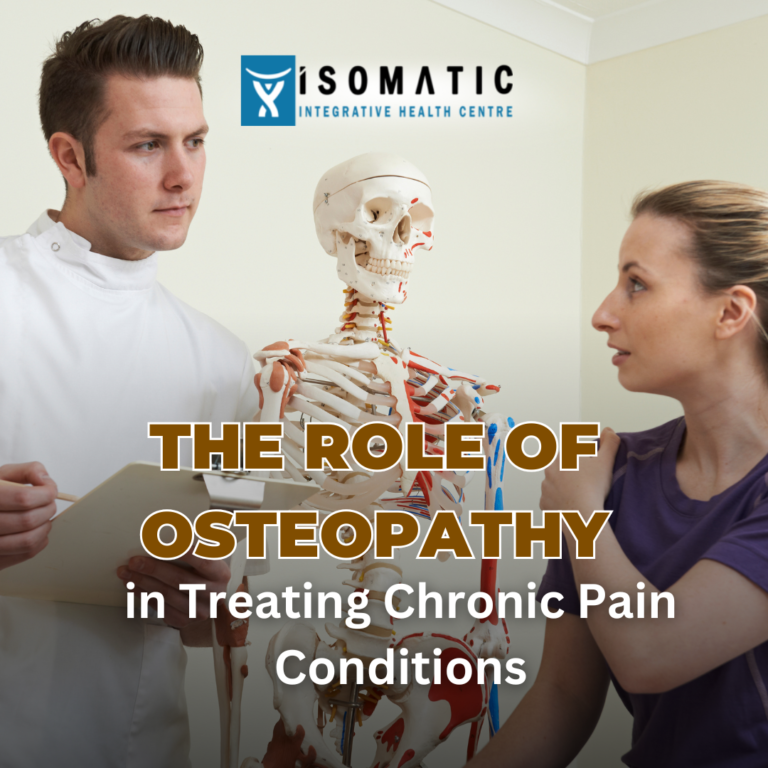Osteopathy offers a refreshing, natural approach to managing chronic pain. Instead of masking symptoms, it helps your body heal from the inside out—gently, effectively, and holistically. Whether you’re battling back pain, migraines, or arthritis, osteopathy could be the missing piece in your wellness puzzle. Ready to feel better without the side effects? Give your body the care it deserves—consider osteopathy.
The Role of Osteopathy in Treating Chronic Pain Conditions

Chronic pain isn’t just a physical burden—it’s emotional, psychological, and even social. Every day, millions wake up already exhausted by discomfort, longing for just one pain-free moment. But here’s the good news: osteopathy offers a beacon of hope in this storm. It’s not magic, but it is remarkably effective. In this guide, we’re diving into how osteopathy—this gentle, hands-on approach to healthcare—is transforming lives by relieving chronic pain in deeply impactful ways
What is Osteopathy?
Osteopathy is a form of manual therapy rooted in the idea that the body is a unit—every bone, organ, and tissue interdependent. Unlike conventional medicine, which often targets symptoms in isolation, osteopathy focuses on the whole person. Developed in the late 19th century by Dr. Andrew Taylor Still, this discipline promotes health and healing through gentle manipulations of the musculoskeletal system. Osteopaths don’t just crack backs—they work with the body to restore balance, enhance circulation, and stimulate the body’s self-healing mechanisms.
Why Chronic Pain is a Global Health Issue
Chronic pain affects one in five people worldwide. That’s more than diabetes, heart disease, and cancer combined. The World Health Organization recognizes chronic pain as a significant public health concern—not just for its physical toll, but also for its contribution to depression, anxiety, job loss, and reduced quality of life. The conventional approach—relying heavily on opioids and invasive surgeries—isn’t always the best path forward. This is where osteopathy steps in with a fresh, whole-body perspective.
Core Principles of Osteopathic Medicine
At its heart, osteopathy is governed by four core tenets:
The body is a unit (mind-body-spirit are interconnected).
The body is capable of self-regulation, self-healing, and health maintenance.
Structure and function are interrelated.
Rational treatment is based on understanding these principles.
These principles guide every session, every touch, and every decision made by an osteopath.
Differences Between Osteopathy, Chiropractic, and Physiotherapy
While these three therapies might look similar on the surface, they differ in philosophy and technique. Chiropractors focus heavily on spinal adjustments. Physiotherapists often center around rehabilitation through exercise. Osteopaths, however, use a holistic approach—addressing how joints, muscles, nerves, and internal organs all work together.
The Holistic Approach in Osteopathy
Osteopathy doesn’t just treat the site of pain—it searches for the root. A sore knee might be due to a misaligned hip or tense back. This investigative, interconnected thinking allows osteopaths to identify and resolve issues that may have gone undetected for years in a traditional medical setting.
Common Causes of Chronic Pain
From old sports injuries and poor posture to autoimmune conditions and neurological disorders, the causes of chronic pain are vast. Here are a few usual suspects:
Arthritis
Fibromyalgia
Sciatica
Degenerative disc disease
Repetitive strain injuries
Post-surgical pain
What ties them together? Inflammation, tissue damage, and imbalances in musculoskeletal alignment.
Chronic vs. Acute Pain: What’s the Difference?
Acute pain comes suddenly and usually has a clear cause—like a broken bone or surgery. It typically fades as the body heals. Chronic pain, however, lasts longer than three months and may linger even after the original injury has healed. It can become a condition in its own right, needing specialized management.
Psychological Impact of Long-Term Pain
Pain that doesn’t go away wears people down. It leads to fatigue, irritability, sleep issues, and emotional distress. In fact, there’s a well-documented link between chronic pain and depression. Osteopathy, with its hands-on healing, often provides not just physical relief but emotional comfort too.
How Osteopaths Assess the Body
During a consultation, osteopaths use their hands to assess posture, joint mobility, and muscle tension. They might also ask about your lifestyle, emotional stress, digestion, and sleep—yes, it’s all connected. This thorough approach helps them map out not just where the pain is, but why it exists.
Manual Techniques Used by Osteopaths
Techniques range from soft tissue manipulation and stretching to myofascial release and craniosacral therapy. These aren’t aggressive or painful maneuvers. They’re often subtle and calming, yet highly effective at encouraging blood flow and releasing tight fascia—the connective tissue that holds everything together.
Improving Circulation and Reducing Inflammation
Osteopathic treatments promote better circulation and lymphatic flow by easing physical tension and correcting postural imbalances. These adjustments reduce inflammation naturally—addressing a key root of chronic pain. Improved blood flow also accelerates healing and reduces pressure on inflamed tissues.
Boosting the Body’s Healing Abilities
By restoring structural balance, osteopathy empowers the body’s self-healing systems. Gentle manipulations relieve restrictions in muscles, fascia, and joints, helping organs and tissues function more efficiently. The result? Faster recovery and less dependence on medication.
Common Chronic Conditions Treated
Osteopathy is effective for a variety of pain-related conditions:
Back and neck pain from poor posture or injury
Migraines and tension headaches
Arthritis and joint stiffness
Fibromyalgia, improving overall quality of life
Digestive issues, such as bloating and IBS
Osteopaths address the root causes, not just symptoms, tailoring treatment to the individual’s condition and needs.
Evidence and Endorsement
Numerous studies support osteopathy’s role in pain relief. Research shows improvements in function, reduced pain levels, and better quality of life for conditions like lower back pain and arthritis. In countries like the UK, osteopathy is integrated into public healthcare for this reason.
How It Fits Into Your Wellness Routine
Numerous studies support osteopathy’s role in pain relief. Research shows improvements in function, reduced pain levels, and better quality of life for conditions like lower back pain and arthritis. In countries like the UK, osteopathy is integrated into public healthcare for this reason.
Accessing Osteopathic Care
You don’t need a referral to see an osteopath in most regions. Sessions typically last 30–60 minutes and cost between $60–$150. Many insurers now cover osteopathic care—check your policy for details.
Look for certified practitioners, ask questions about their experience, and choose someone who listens to you.
FAQs
What is osteopathy?
A hands-on therapy that improves body alignment and reduces pain.
Is it safe?
Yes, it’s gentle and safe for all ages.
What can it help with?
Back pain, arthritis, migraines, fibromyalgia, and more.
How many sessions do I need?
Depends on your condition—some feel better after 1–2 visits.
Do I need a referral?
No, you can book directly in most cases.
What happens after treatment?
You may feel relaxed or mildly sore—this usually fades fast.
Conclusion
Discover how we can help you today. Contact us to book your first appointment.
Related Posts

Can Physiotherapy Improve Your Immune System?
December 9, 2025
Can Physiotherapy Improve Your Immune System? Most people think of physiotherapy as treatment for injuries, pain, or movement limitations—but its benefits extend far beyond rehabilitation.

Headaches and Tension? Try These Hands-On Osteopathic Solutions
December 2, 2025
Headaches and Tension? Try These Hands-On Osteopathic Solutions Headaches caused by tension can be draining, distracting, and downright frustrating. Whether they come from long hours

Isometric Exercises: Why We Recommend Them in Recovery
November 25, 2025
Isometric Exercises: Why We Recommend Them in Recovery When you’re healing from an injury, not all exercises are safe—some movements can even set you back.
